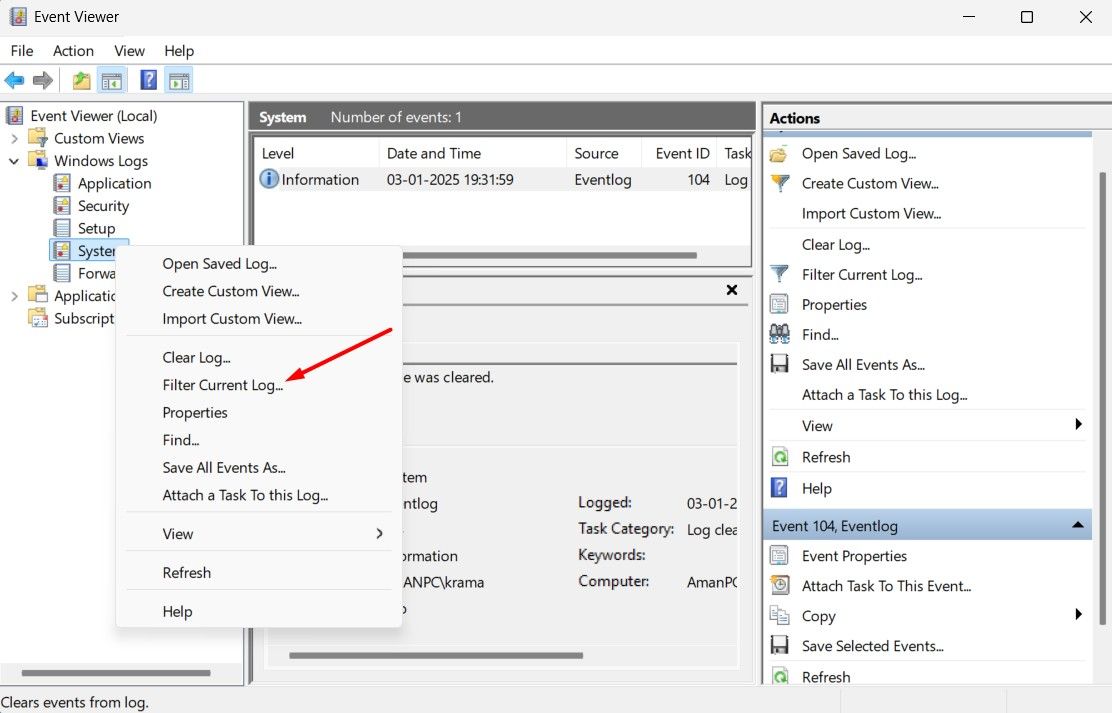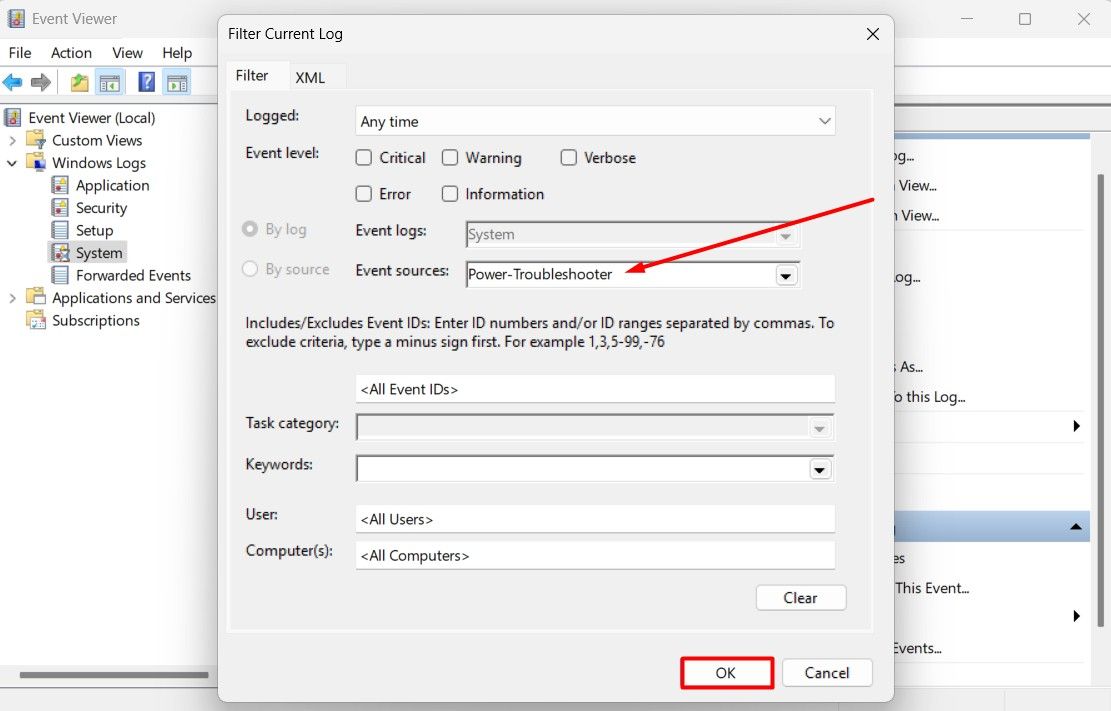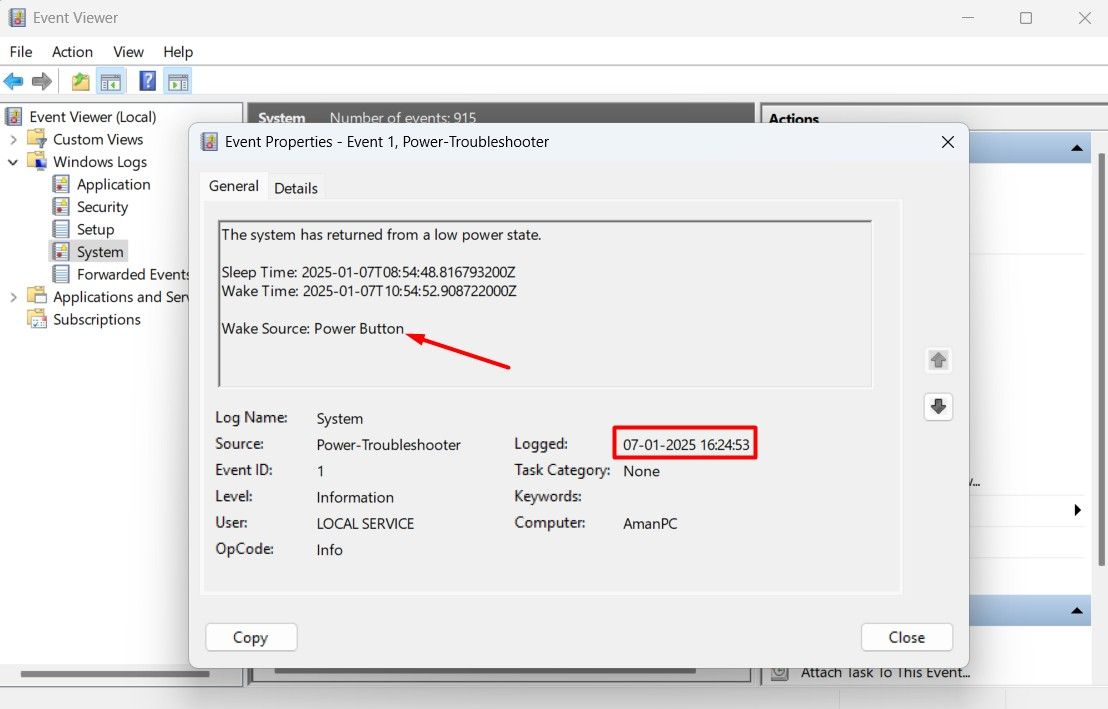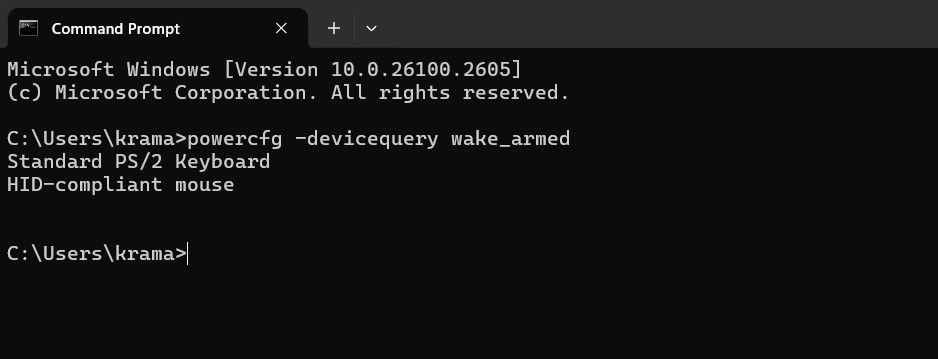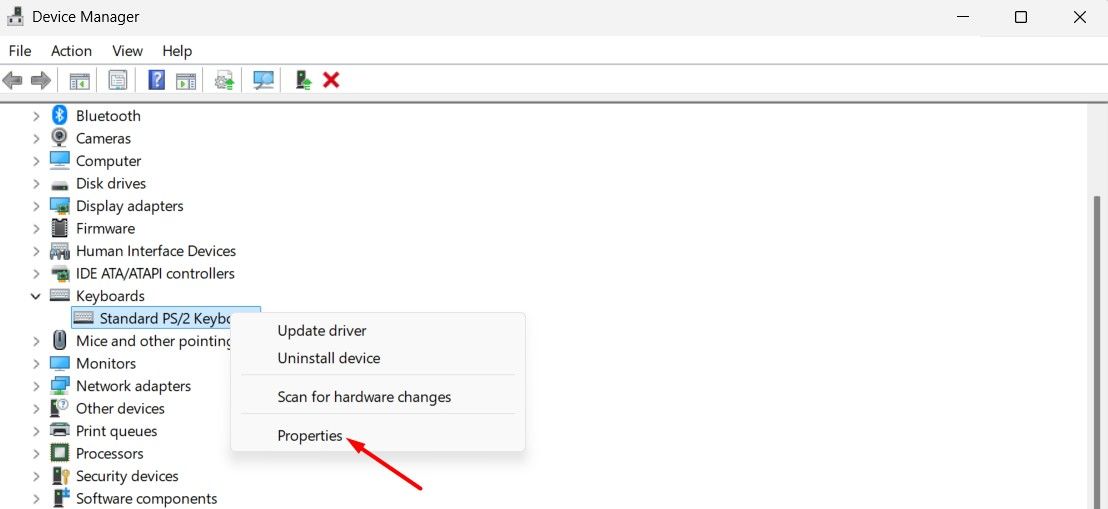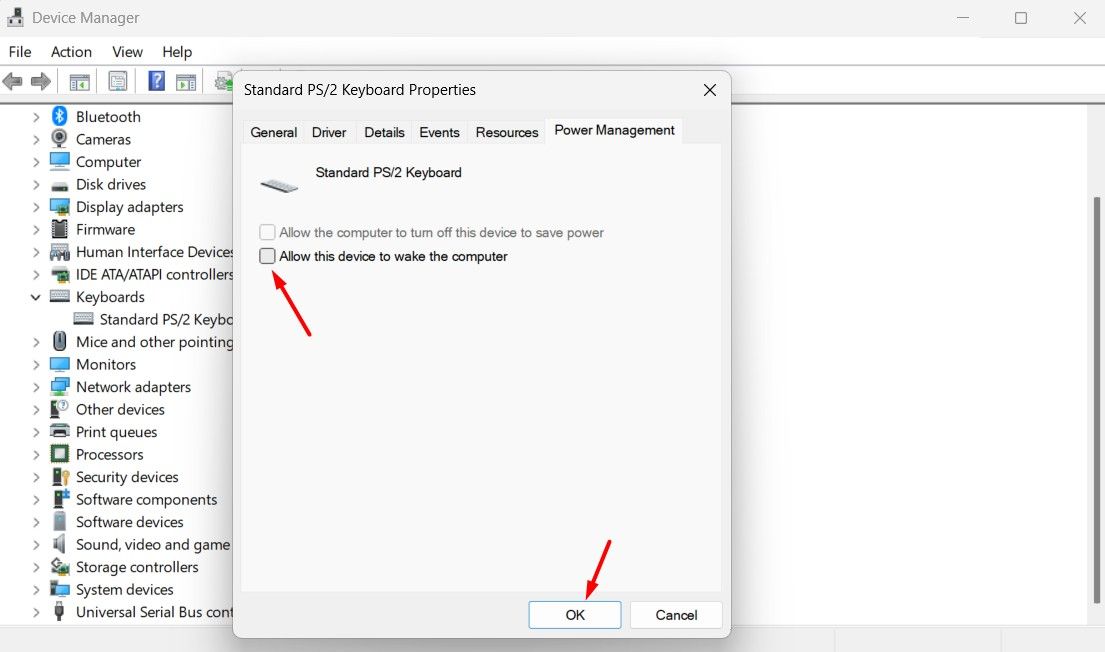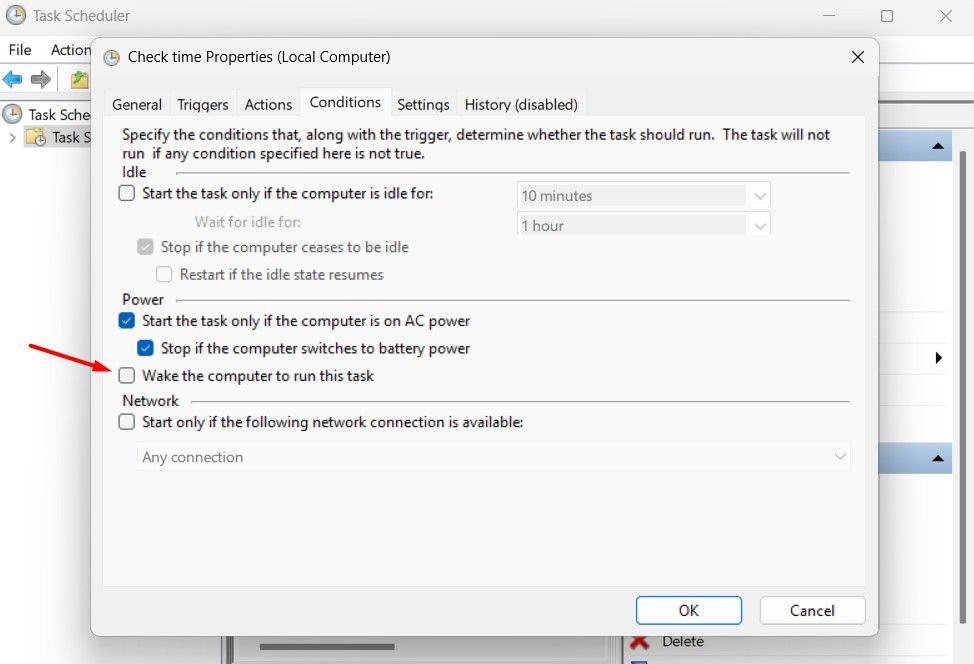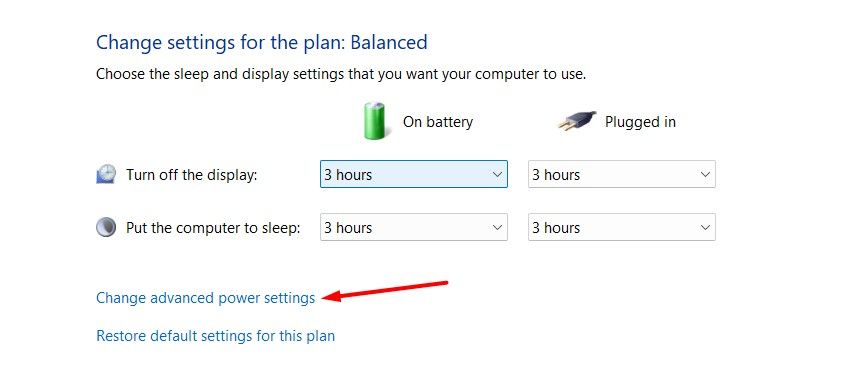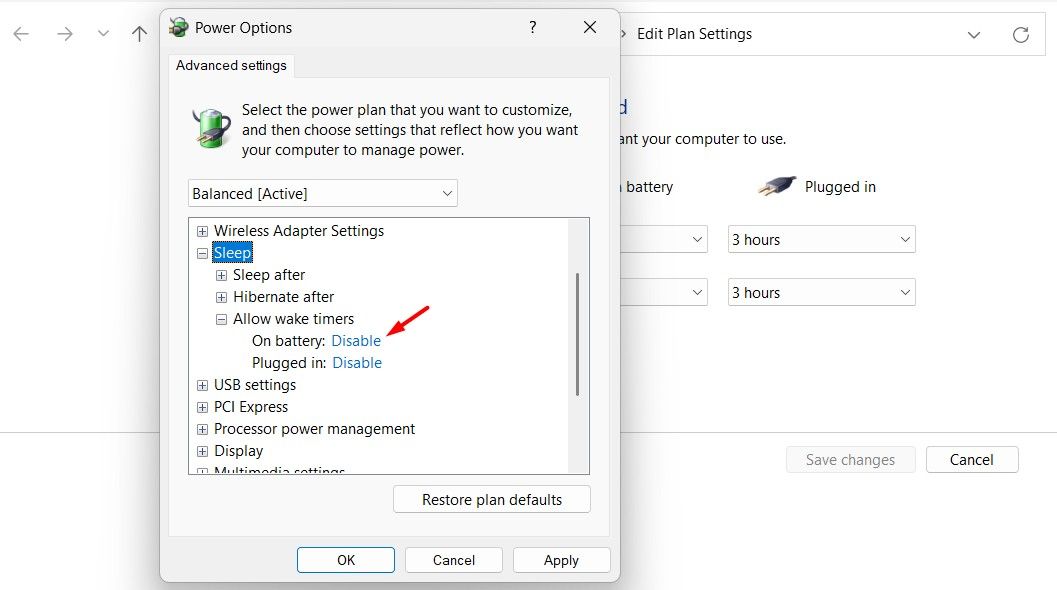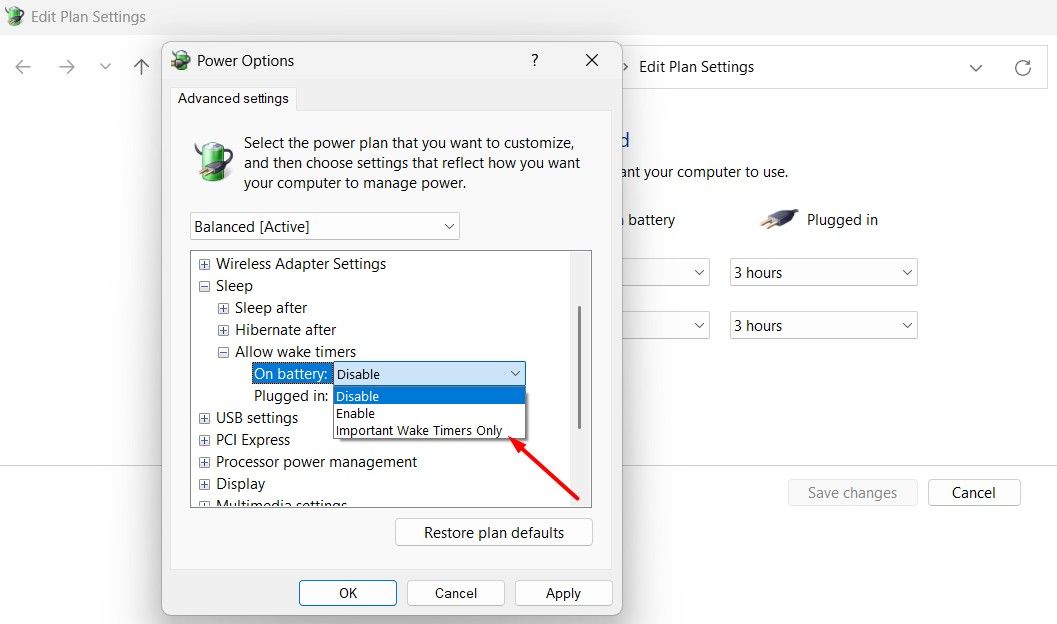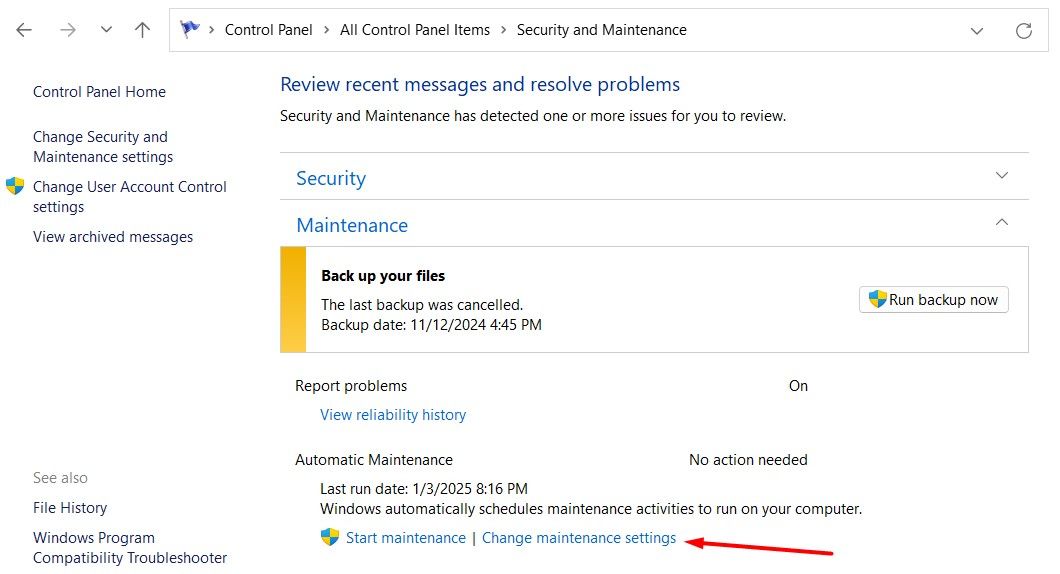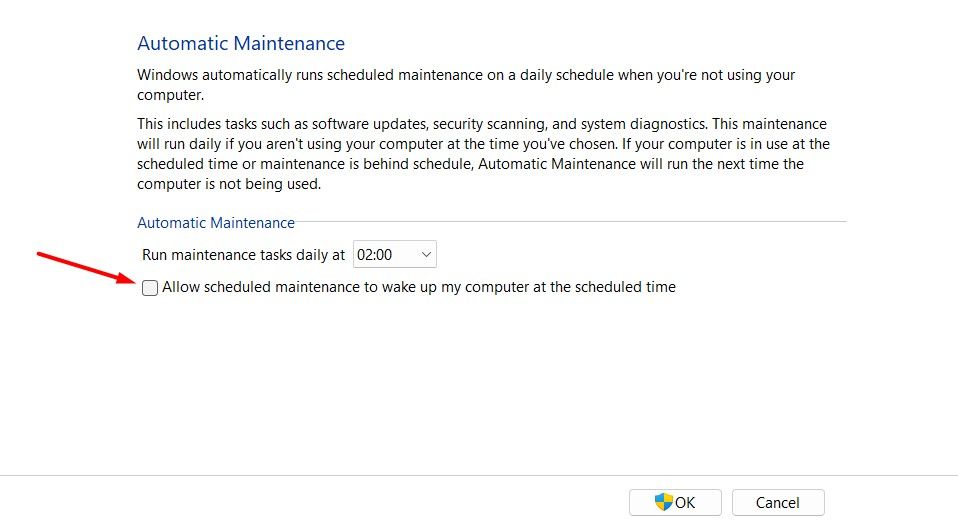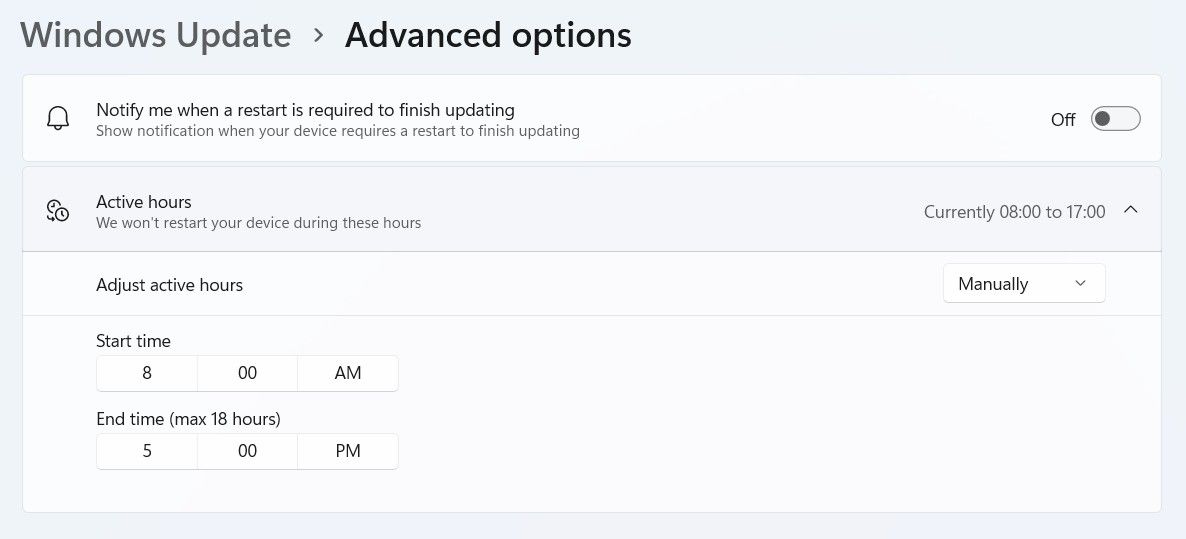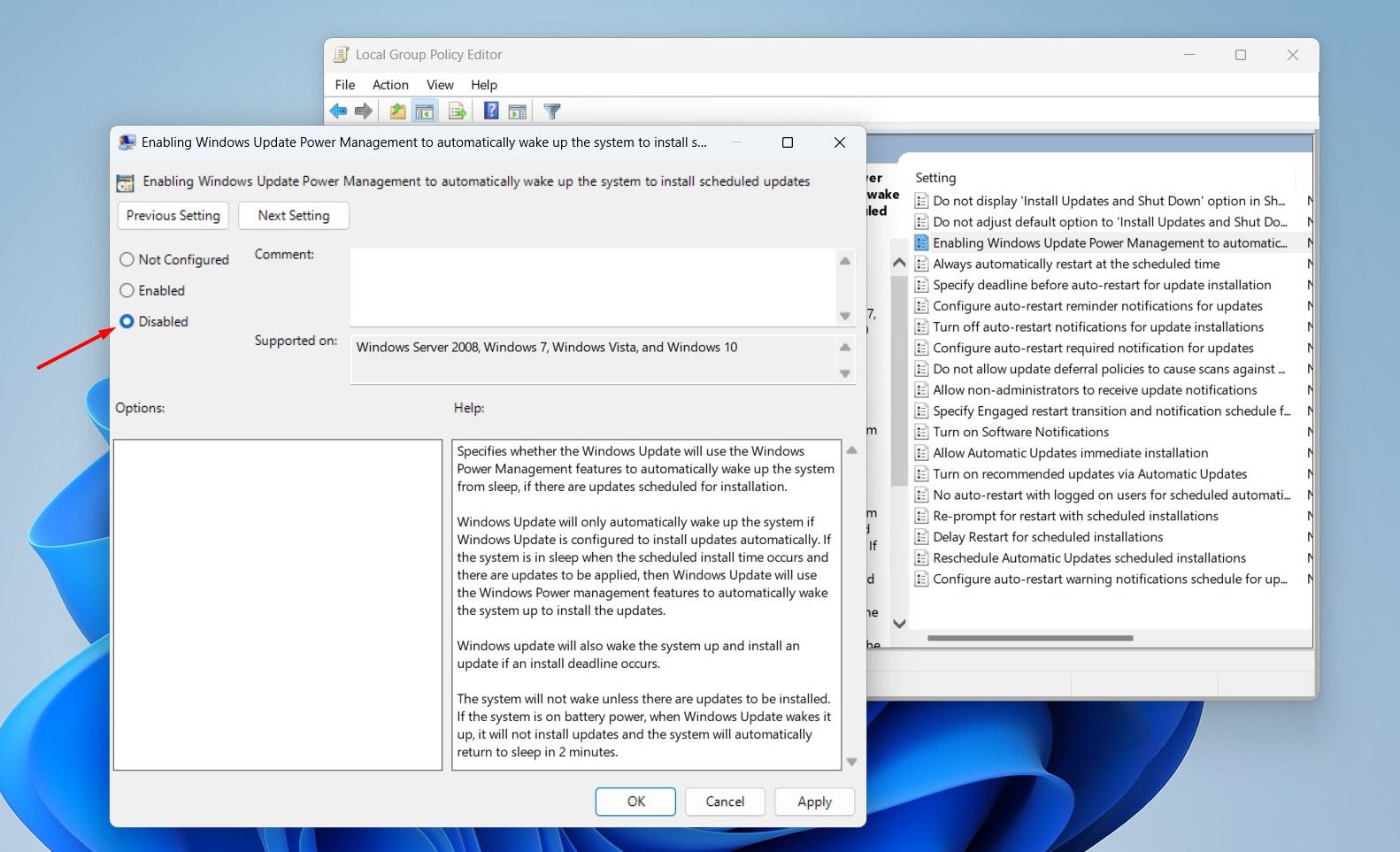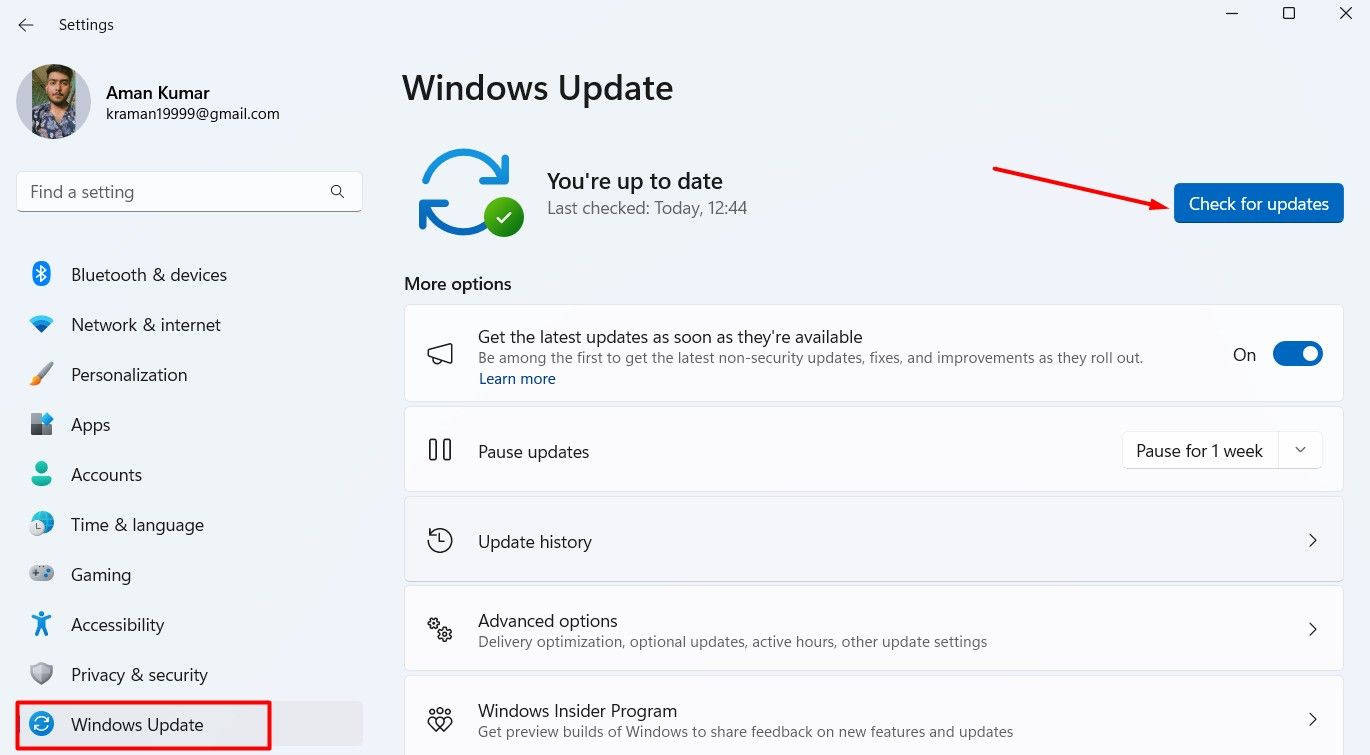Putting your PC to sleep is a great way to save energy while still making sure you can resume work quickly. But what can you do if your PC keeps waking up on its own? Here’s how to figure out what’s waking it up, and how to prevent it.
How to Find Out What’s Waking Your PC Up
Before you can fix the problem, you need to determine the problem. There are a few different steps you’ll probably need to take here, as no one solution fits everyone.
See the Last Thing That Woke Your PC
The first step in figuring out why your PC is waking up before you want it to is determining what’s doing the waking. You can usually figure out what event caused your computer to wake up most recently with a simple Command Prompt command.
Start the Command Prompt by hitting Start, typing CMD and then selecting the “Command Prompt” app. In the Command Prompt window, type powercfg -lastwake and press Enter.
I can tell from the output of the command, for example, that I used the power button to wake my PC.
You may also see listed devices—like your mouse, keyboard, or network adapter—or events like wake timers or automatic maintenance. This won’t always give you the information you need, but often it will.
Explore Other Wake Up Events with Event Viewer
While the Command Prompt command I just talked about is great for showing you what last woke your PC, sometimes you need to go a bit further back in history to see what’s woken it up before. For that, I’d recommend you to use the Event Viewer, a handy logging tool that will help you see when your computer turned off (be that because it was shut down, put to sleep, or hibernated) and when it woke up.
To open Event Viewer, hit Start, type Event and then select “Event Viewer.”
In the left-hand pane, drill down to Event Viewer (Local) > Windows Logs > System. You’ll see a lot of information here, but don’t worry. You don’t need to read through or attempt to understand everything going on in the log. Right-click the “System” log and choose “Filter Current Log.”
In the Filter Current Log window, click the Event sources drop-down menu, select the “Power-Troubleshooter” option and then click “OK.”
Back in the main Event Viewer window, you’ll see that you’ve filtered out the hundreds of messages that aren’t relevant to your problem and honed right in on the thing you care about—when the computer is waking up from a low-power state. In the new filtered view, you can scroll through every instance where your computer has woken over the duration of the log (which should be hundreds of entries).
What you should focus on is the time the event was logged (did it wake at a time you were at the computer or was it a random middle-of-the-night wake up call) and what Wake Source is indicated.
- If the Wake Source says “Power Button,” that indicates that the power button on the PC was pressed to wake it up—an action you most likely took yourself.
- If the Wake Source says something like “Device—HID-Compliant Mouse (or Keyboard),” that indicates the PC is configured for key presses and mouse movements to wake it.
- If the Wake Source lists your network adapter, that indicates your PC is configured so that incoming network activity can wake it up—something that’s useful if you like having your PC go to sleep but still need it available to other network devices at times.
- If the Wake Source says “Timer,” it means that a scheduled task woke the computer. The source information usually includes some indication about the task that woke the PC.
- You may also see something like “Wake Source: Unknown,” which is a bit more cryptic but at least it tells when the PC was awoken.
Once you’ve established that there is in fact a pattern of odd computer wake up calls and you’ve identified the source, it’s time to do something about it.
How to Stop Your PC From Waking Up Randomly
Hopefully, one of the above tricks helped you figure out what’s waking your PC. Now, it’s time to solve the problem. Skip down to the section that applies to your situation.
Limit Hardware Devices That Can Wake Your PC
As you probably noticed from looking through Event Viewer logs, there are four primary hardware devices that can wake your PC—mice, keyboards, network adapters, and power buttons (or laptop lids if that’s what you’re using). You can easily view a complete list of the hardware devices allowed to wake your PC with a Command Prompt command. Open up a Command Prompt window and run the following command:
powercfg -devicequery wake_armed
Whatever your setup, now that you know which devices can wake your PC, you can use Device Manager to prevent them from doing so. I’ll show you how to stop your keyboard from waking your computer, but the general process applies to any other device.
Open Device Manager and locate the device you want to prevent from waking your computer. The device will have the same name as it appeared in the output of the powercfg command you just ran. Right-click the device and select “Properties” from the context menu.
In the “Power Management” tab of the device’s properties window, uncheck the “Allow this device to wake the computer” option, and then click “OK”.
While you’re in Device Manager, feel free to disable any other devices you don’t want waking your computer. Specifically, you should look for the network adapter, as there have been many cases where the network adapter wakes the computer from sleep. Make sure the “Allow this device to wake the computer” option is unchecked for your network adapter. Once you’re finished, you can close Device Manager.
Disable Wake Timers and Scheduled Tasks
The other thing that can wake your PC is a scheduled task. Some scheduled tasks—for example, an antivirus app that schedules a scan—can set a wake timer to wake your PC at specific time to run an app or command.
To see a list of wake timers set on your computer, you can use a Command Prompt command. You’ll need to run Command Prompt with administrative privileges. To do this, search for Command Prompt in the Start menu and choose “Run as Administrator” from the results. In the Command Prompt window, type the following command and press Enter:
powercfg -waketimers In this example, you can see I have one wake timer—a scheduled task set to check the time.
You have two options for stopping this: either disable the specific wake timer or disable all wake timers.
If you want to stop just one task from waking your computer, you can either uninstall the app that created the task or adjust the scheduled task settings. To disable all wake timers, open Task Scheduler, find the task, right-click it, and choose “Properties.” In the Properties window, go to the “Conditions” tab and uncheck the “Wake the Computer to Run This Task” option.
This leaves the scheduled task in place and, if your PC is awake, Windows will run the task. It just won’t wake the PC in order to do it.
If you don’t want any programs waking your computer up automatically, you can disable wake timers entirely. To do so, type Edit power plan in the Start menu and hit Enter. Then, click the “Change Advanced Power Settings” option.
Expand the “Sleep” entry, double-click the “Allow Wake Timers” entry below it, and then set the entries below it to “Disabled.” If you’re on a laptop, you’ll see two entries—On battery and “Plugged in. Choose the “Disabled” option for both.
There’s also a third option besides enabling or disabling wake timers. This option is called “Important Wake Timers Only” and wakes your PC only for major Windows system events like a scheduled restart of your PC outside active hours following a Windows update.
You can try setting your wake timers to “Important Wake Timers Only” and see if it solves your problems. If your PC is still waking up more often than you’d like, you can always come back and set wake timers to “Disabled” instead.
Prevent Automatic Maintenance From Waking Your PC
By default, Windows runs automatic maintenance tasks at 2:00 am every night if you’re not using your computer. It’s also set to wake your PC from sleep to run those tasks. These tasks include things like checking to see if your hard drive needs defragmenting, running system diagnostics, checking for disk volume errors, and more. They are important tasks to have run periodically, but if you’d prefer that Windows not wake your PC to do it, you can turn that setting off.
Open the Control Panel, change the View by setting to “Large icons,” and select “Security and Maintenance.” On the Security and Maintenance page, expand the Maintenance section and click “Change Maintenance Settings.”
On the Automatic Maintenance page, uncheck the “Allow scheduled maintenance to wake up my computer at the scheduled time” option and click “OK.” If you’d rather keep the feature on but at a different time, you can also update the schedule to one that works better for you.
Adjust Active Hours
Windows includes an Active Hours setting that you can configure to prevent your computer from waking up from sleep to perform tasks during a specific time period. If you’ve noticed that Windows is waking up from sleep at a particular hour of the day, you can adjust the Active Hours settings to prevent this, which should resolve the issue.
To do this, open the Settings app and navigate to Windows Update > Advanced Options > Active Hours. Select “Automatic” from the Adjust active hours dropdown menu. Then, set the time period during which you don’t want your computer to wake up from sleep.
Edit the Windows Update Power Management Policy
The Windows Update power management policy in the Group Policy Editor manages whether your computer can wake up from sleep automatically to install updates. If this policy is enabled, it may be the reason your computer is waking up from sleep automatically. However, this fix is only applicable to Windows Pro and Enterprise editions, as the Group Policy Editor is available exclusively on these versions of Windows.
That said, open the Group Policy Editor and navigate to the following location:
Computer Configuration > Administrative Templates > Windows Components > Windows Update > Legacy Policies Double-click the “Enabling Windows Update Power Management to automatically wake up the system to install scheduled updates” policy on the right. Select the “Disabled” option, click Apply > OK.
Update Windows
There’s a possibility that the issue is caused by a bug in the version of Windows you’re using. Alternatively, a problem with one of the drivers installed on your computer could also be the reason behind the issue. The best way to resolve a Windows bug or a driver-related issue is to update Windows.
To do this, open the Settings app, select “Windows Update” from the left sidebar, and click “Check for Updates” on the right.
Windows will automatically search for any available updates, including updates for the drivers installed on your computer. Once the updates are installed, restart your computer, and the issue should be resolved.
Sleep is a valuable tool for preserving energy while still keeping your PC immediately available when you need it. While you’ll likely want some devices (like your keyboard) and some scheduled tasks to be able to wake up your PC, it’s good to know that you have some tools for investigating why it’s waking up and options for stopping it from happening when you don’t want it to.




